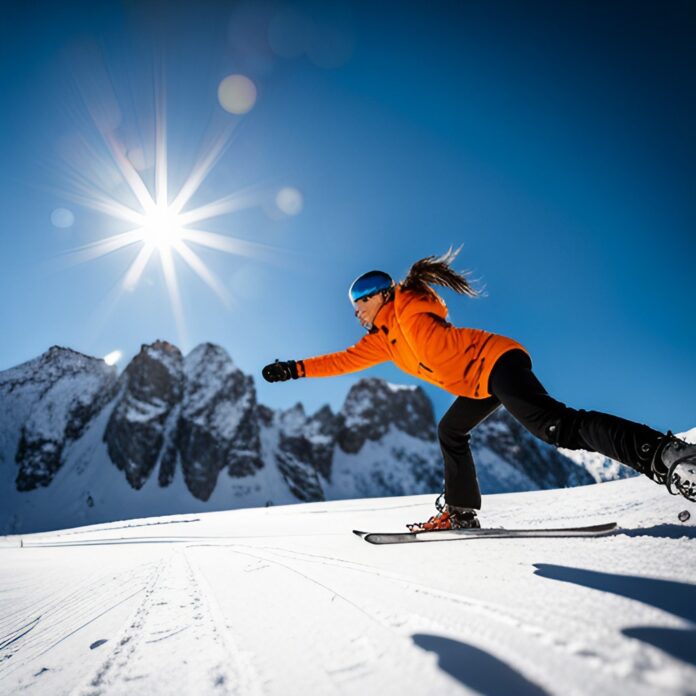As winter approaches, the call of the mountains grows stronger for skiing enthusiasts. The rush of fresh, crisp air, the gliding over powdery snow, and the scenic beauty of snow-capped peaks make the sport of skiing an irresistible adventure. However, like any high-intensity physical activity, skiing requires a good amount of preparation to ensure a safe and enjoyable season on the slopes.
In this comprehensive guide, we’ll cover the essential stretches that skiers need to incorporate into their pre-season, in-season, and post-season routines. Stretching is critical for any skier, not only to improve performance but also to reduce the risk of injury. We’ll also touch on why flexibility is key to mastering your next slope.
Stretches for Skiers
Before hitting the slopes, it’s essential to prepare your body for the physical demands of skiing. Below are key stretches that target the muscle groups most used during skiing, helping to enhance flexibility, improve range of motion, and decrease the risk of injury.

- Hamstring Stretch: Skiing puts a considerable strain on the back of the legs. Sitting on the floor with legs extended in front, reach forward towards your toes, keeping the knees straight. Hold for 15-30 seconds to stretch the hamstrings.
- Quadriceps Stretch: The front of your thighs works hard to stabilize your skiing stance. Stand on one foot, grab the opposite ankle, and pull it towards your buttock, keeping your knees together and the hip straight. Hold and then switch legs.
- Calf Stretch: Your calves help you manoeuvre and maintain balance. Find a wall or a tree, place your hands on it, then step one foot back, keeping it straight and the heel down. Press the back heel into the ground until you feel a stretch in the calf, then switch legs.
- Hip Flexor Stretch: These muscles are essential for maintaining proper ski posture. In a kneeling position, place one foot in front of you to form a right angle. Lean forward, pushing your hips towards the floor. Hold, then switch sides.
- Lower Back Stretch: To prevent stiffness and pain after skiing, stretch your lower back. Lie on your back, bring your knees to your chest, and wrap your arms around them. Gently pull your knees closer to increase the stretch.
Incorporating these stretches into your routine will not only prepare you for a day on the slopes but also contribute to a longer, more enjoyable ski season.
Understanding the Importance of Stretching for Skiers
Before we hit the slopes, it’s important to understand why stretching should be a vital part of our skiing prep. Flexibility is one of the pillars of fitness. It allows skiers to execute moves with a wider range of motion, giving you better control and preventing strains or tears in your muscles, which could sideline you for the winter.
The motions and stances of skiing engage several muscle groups, particularly the quadriceps, hamstrings, glutes, and core. By stretching regularly, not only do you reduce the likelihood of injuries, but you also improve your overall performance. This combination allows you to ski longer and stronger, and even enhance your turning and carving abilities.
Pre-Season Stretches for Skiers
These are the stretches you need to start incorporating into your routine a few weeks before ski season starts. The goal here is to gently start improving your flexibility without overdoing it and causing unnecessary strain.
Quad Stretch
- Start by standing on one leg.
- Bend the opposite leg and reach back to grab your ankle with the corresponding hand.
- Pull your heel gently toward your glutes while pushing your hips slightly forward.
- Hold the stretch for 30 seconds to 1 minute.
- Switch legs and repeat.
The quadriceps are heavily used in skiing, especially when navigating steep inclines. This stretch will prepare you for the lactic acid build-up that can occur during long runs.
Hamstring Stretch
- Sit on the ground with both legs straight out in front of you.
- Lean your upper body forward, reaching for your toes.
- Hold the stretch for 30 seconds to 1 minute.
- You should feel a gentle pull along the back of your thighs.
This stretch is essential for maintaining the flexibility of your hamstrings, which can get tight from skiing in a bent-over position.
Glute Stretch
- Lay on your back with both knees bent.
- Cross your right ankle over your left thigh, just above the knee.
- Reach behind your left thigh and pull towards your chest.
- Hold the stretch for 30 seconds to 1 minute.
- Be sure to switch sides to get both glute muscles.
The glutes are vital for maintaining balance and control while skiing, especially in deep powder, moguls, and off-piste conditions.
Calf Stretch
- Lean against a wall with one leg forward and one leg back.
- Bend the front leg and keep the back leg straight with the heel on the floor.
- Lean forward to feel a stretch in your back leg’s calf muscle.
- Hold the stretch for 30 seconds to 1 minute.
Keeping your calves flexible is important for maintaining proper skiing form and reducing the risk of shin splints.
Hip Flexor Stretch
- Start in a lunge position with your back leg straight.
- Lower your hips towards the floor until you feel a stretch in the front of your back leg’s hip.
- Hold the stretch for 30 seconds to 1 minute.
- Stand up and repeat on the other side.
Flexibility in the hip flexors is crucial for maintaining a strong and balanced stance while skiing.
In-Season Stretches for Skiers
Staying limber during the ski season is just as important as the pre-season stretching. With chilly temperatures and potential muscle fatigue, skiers must adapt stretches to their specific needs.
Dynamic Leg Swings
- Stand with one hand on a wall or a chair for balance.
- Swing one leg forward and backward, keeping the leg straight as it swings.
- Perform 10 swings on each leg.
- Then, swing the leg side-to-side across the front of your body.
- Complete 10 swings in each direction on each leg.
Dynamic leg swings help to increase the blood flow and flexibility in your hips and hamstrings before a day on the slopes.
Ankle Rolls
- Sit on the ground and extend both legs out in front of you.
- Rotate your ankles to make large circles, about ten times in each direction.
- This helps to warm up and increase the flexibility of your ankle joints, which can be heavily used when navigating uneven ski surfaces.
Back Twists
- Sit on the ground with your legs extended.
- Cross one leg over the other to create a figure four with your knee pointing out to the side.
- Twist gently to the opposite side, using your arm on the same side as your back to apply pressure to the outside of the knee.
- Hold for about 30 seconds and release, then repeat on the other side.
Twisting your back can help warm up your spine and improve your twisting movements while skiing, especially important in mogul and slalom runs.
For an optimal skiing experience, complementing your stretch routine with a balanced nutrition plan is essential. Fuelling your body correctly enhances your performance on the slopes and aids in recovery. For beginners unsure where to start, a detailed guide on developing a nutrition plan tailored for skiers can be found at FitBizHouse. This resource provides comprehensive insights into the ideal balance of carbohydrates, proteins, and fats, along with hydration strategies to keep you energized and at the top of your game throughout the ski season.
Post-Season Stretches for Skiers
Just because the ski season is coming to a close, doesn’t mean your stretching routine should. Post-season stretching is your chance to maintain the flexibility gained and help your body recover from the intense activity of skiing.
Full Body Stretch
- With legs together, reach your arms overhead and stretch your entire body.
- Lean to one side, then the other, feeling the stretch in your side.
- Move to bend forward and reach for the ground, feeling the stretch in your back and hamstrings.
- Hold each position for about 15-20 seconds.
This full-body stretch will help to elongate your muscles and aid in the recovery process.
Relaxation Stretch
- Sit on the ground with your legs crossed.
- Place your arms gently at your sides and close your eyes.
- Take deep breaths in and out, as you relax your body completely.
- Spend at least 5 minutes in this position, allowing your muscles to release tension and aiding in your overall recovery.
The relaxation stretch is more than a physical stretch, it’s an opportunity to restore and reset your mind and body for your next athletic endeavour.
The Flexibility-Skiing Connection
Flexibility may seem secondary to strength and endurance, but when it comes to skiing, it is just as important. Flexibility ensures you’re able to smoothly adjust your movements as needed and it assists in the absorption of shock, which can be high on downhill runs. In addition, a flexible skier is a safer skier, able to adapt to unexpected conditions on the slopes.
For those looking to deepen their understanding and practice of stretching for skiing, several resources can be invaluable. Websites like Ski Magazine offer comprehensive guides and videos tailored to skiers of all levels. Additionally, platforms such as Yoga Journal provide specific yoga poses and sequences that can improve flexibility, balance, and strength in skiers. For more interactive learning, downloading apps like Daily Yoga or Nike Training Club offers personalized stretching routines that can be easily incorporated into your ski preparation and recovery processes. Lastly, for skiers interested in a deeper scientific understanding of muscle recovery and flexibility, academic articles available through Google Scholar can be a great resource.
Conclusion
Your commitment to these stretches will not only enhance your skiing but also contribute to an overall healthy and active lifestyle. Remember, consistency is key. Incorporate these stretches into your daily routine, and you’ll notice the difference in your performance on the mountain. Happy skiing, and may your season be filled with adventure and joy!


